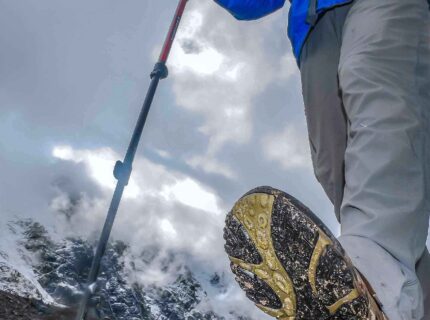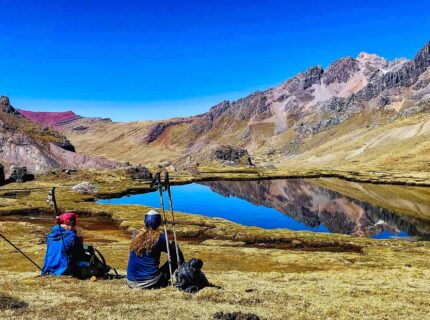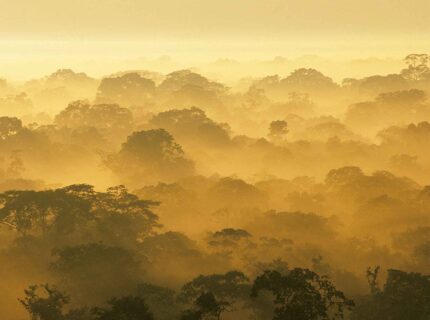
Amazon Jungle



The Amazon Jungle or Rainforest in Peru is one of the most biodiverse places on Earth, with over 13,000 species of plants, 1,800 species of birds, and 1,000 species of butterflies, among other wildlife.
Visitors can experience the Amazon Rainforest in Peru by taking guided tours with local operators like Peru Summit Adventures. These tours typically include activities like hiking, wildlife spotting, birdwatching, and canoeing along the Amazon River and its tributaries. One popular destination in the Peruvian Amazon is the Tambopata National Reserve, which is home to a diverse range of flora and fauna, including endangered species like the giant otter, jaguar, and harpy eagle.
Another popular destination is Manu National Park, it is one of the largest and most biodiverse protected areas in the world, with over 15,000 plant species, 1,000 bird species, and 200 mammal species.
Visitors to Manu National Park can experience the Amazon Rainforest through a variety of activities, such as guided hikes, wildlife spotting, birdwatching, and river tours. The park is also home to several indigenous communities, and visitors can learn about their traditional way of life and customs. One of the highlights of Manu National Park is the chance to see large mammals like jaguars, tapirs, and giant otters in their natural habitat. The park is also home to several macaw clay licks, where colorful macaws gather to eat clay, providing a unique and memorable wildlife viewing experience.
Access to Manu National Park is restricted, and visitors must be accompanied by a licensed guide to enter the park. This helps to protect the park’s fragile ecosystem and ensure a safe and enjoyable experience for visitors.
Another emerging popular destination is the Pacaya Samiria National Reserve, which is one of the largest protected areas in Peru and is known for its pink river dolphins and anacondas. It’s important to note that the Amazon Rainforest can be a challenging environment to navigate, with high humidity, dense vegetation, and a variety of potentially dangerous wildlife. It’s best to visit with a reputable tour operator and an experienced guide who can help ensure your safety and maximize your enjoyment of this incredible destination.
The Peruvian Amazon Jungle or Rainforest is an incredibly diverse and rich ecosystem, and there are many highlights to experience. Here are just a few:
Biodiversity: The Peruvian Rainforest is home to an incredible array of plant and animal species. Visitors can see monkeys, birds, reptiles, and insects, as well as exotic plants like orchids and bromeliads.
Amazon River: The Amazon River is the lifeblood of the rainforest and the largest river in the world by volume. Visitors can explore the river by boat or canoe, and see wildlife and local communities along its banks.
Indigenous Communities: The Peruvian Rainforest is home to many indigenous communities, each with their own unique culture and way of life. Visitors can learn about their traditions, foods, crafts, and beliefs.
National Parks and Reserves: Peru has several protected areas in the rainforest, including the Tambopata National Reserve, Manu National Park, and Pacaya Samiria National Reserve. These parks offer opportunities for hiking, wildlife viewing, and eco-tourism.
Canopy Walkways: Many tour operators offer canopy walkways, which allow visitors to walk among the treetops and see the rainforest from a new perspective. This can be a thrilling and memorable experience.
Traditional Medicine: The rainforest is home to many medicinal plants, and visitors can learn about traditional healing practices from local guides and communities.
The Peruvian Rainforest is a unique and breathtaking destination, with countless highlights to discover and enjoy just make sure to hire the right and reputable tour operator, any questions regarding this destination, please contact our rainforest experts.
Yes, there are regulations in place for visiting Manu National Park and Tambopata National Reserve in Peru. These regulations are designed to protect the fragile ecosystems and unique wildlife found in these areas. Here are some of the most important regulations:
Visitors must be accompanied by a licensed guide: To enter Manu National Park or Tambopata National Reserve, visitors must be accompanied by a licensed guide. This helps to ensure that visitors have a safe and enjoyable experience, while also minimizing the impact on the environment.
Respect the wildlife: Visitors are not allowed to feed or touch the wildlife and should maintain a respectful distance at all times. Flash photography is also prohibited in many areas.
Leave no trace: Visitors should follow the principles of “Leave No Trace” and pack out all trash and waste. Littering and dumping waste in the park or reserve is strictly prohibited.
Do not disturb or remove plants or artifacts: Visitors should not remove or disturb any plants or artifacts found in the park or reserve.
Follow designated trails and areas: Visitors should stay on designated trails and areas to minimize the impact on the environment.
Obtain necessary permits: Visitors must obtain any necessary permits and pay any applicable fees to enter the park or reserve.
By following these regulations, visitors can help to protect the natural beauty and wildlife of these areas for future generations to enjoy.
Trips to the Amazon Jungle or rainforest are available from April to November, December to March is the rainy season so it’s not a good idea to go.
The weather in Tambopata and Manu National Park can vary depending on the season, but generally, the climate is hot and humid throughout the year, with rainfall occurring regularly.
The rainy season in Tambopata and Manu National Park runs from December to March, with the heaviest rainfall occurring in January and February. During this time, the rivers and streams in the parks can flood, making some areas inaccessible. The dry season runs from April to November, with the driest months being June to August. During the dry season, temperatures can be slightly cooler and the humidity is lower, making it a more comfortable time to visit. However, there may be occasional rain showers even during the dry season.
The weather in Tambopata and Manu National Park is generally hot and humid throughout the year, with regular rainfall. Visitors should come prepared for wet conditions and pack appropriate clothing and gear. It’s also a good idea to check the local weather forecast before embarking on any outdoor activities.
Rainy season (December to March)
Dry season (April to November)
Please note that these are just averages, and temperatures can vary depending on the time of day, elevation, and other factors. It’s always a good idea to check the local weather forecast and pack appropriate clothing for the expected conditions.
Getting prepared for an Amazon jungle trip involves a few important steps to ensure you have a safe and enjoyable experience. Here are some tips to help you prepare:
Get vaccinated: Make sure you have all the necessary vaccinations for travel to the area, such as yellow fever, hepatitis A and B, and typhoid.
Pack appropriate clothing and gear: Bring lightweight, breathable clothing that will protect you from the sun, insects, and rain. This might include long-sleeved shirts and pants, a hat, sturdy hiking shoes or boots, insect repellent, sunscreen, and a rain jacket or poncho. Don’t forget to also bring a good quality camera, binoculars, and a flashlight.
Bring necessary medications: If you have any medical conditions or allergies, make sure to bring all necessary medications and inform your guide of any special requirements.
Stay hydrated: The Amazon jungle can be hot and humid, so it’s important to drink plenty of water to stay hydrated. You may want to bring a reusable water bottle and a water filter or purification tablets to treat any water you collect in the jungle.
Follow the regulations: As mentioned earlier, there are regulations in place for visiting the jungle to protect the environment and wildlife. Make sure to follow these regulations and respect the jungle’s flora and fauna.
Hire a licensed tour operator: To ensure a safe and informative experience, hire a reputable tour operator that will assign you a licensed guide who can provide you with important information about the area, as well as any necessary assistance. Peru Summit Adventures organizes trips to this area of Peru, do not hesitate to contact us for your Amazon Rainforest trip.
By taking these steps to prepare, you’ll be better equipped to have an enjoyable and safe jungle experience.
Here are more tips to help you make the most of your Peruvian Amazon trip:
Choose a reputable tour operator: There are many tour operators that offer trips to the Peruvian Amazon, so make sure to do your research and choose a reputable one with a good track record for safety and sustainability. Peru Summit Adventures is one of them.
Be respectful of the environment: As mentioned earlier, the Peruvian Amazon is home to many unique and delicate ecosystems. Be sure to respect the flora and fauna by not disturbing the wildlife, not littering, and following the regulations set by the parks.
Take advantage of the opportunities for wildlife viewing: The Peruvian Amazon is home to a staggering variety of wildlife, from colorful birds and butterflies to elusive jaguars and giant otters. Make sure to take advantage of wildlife viewing, such as guided nature walks, boat tours, and canopy towers.
Be prepared for the weather: The Amazon can be hot and humid, with frequent rain showers. Bring lightweight, breathable clothing that dries quickly and protects you from the sun and insects. Don’t forget to also bring a rain jacket or poncho and waterproof bags for your belongings.
Learn about the local culture: The Peruvian Amazon is home to many indigenous communities with their own unique cultures and traditions. Take the time to learn about these communities and their way of life, and consider supporting local businesses and organizations that work to preserve these cultures.
Keep an open mind: Finally, be open to new experiences and adventures in the Amazon. This is a unique and incredible ecosystem that will challenge and inspire you in many ways. Embrace the unexpected and enjoy the journey!
Peruvian Amazon cuisine is known for its diversity, with a mix of traditional indigenous dishes and modern culinary influences. Here are some popular dishes you might encounter during your trip:
Tacacho con Cecina: This is a dish made with mashed green plantains and salted dried meat. It’s often served with a spicy sauce made from chili peppers and garlic.
Juane: This is a traditional Amazonian dish made with rice, chicken, and spices, all wrapped in banana leaves and steamed. It’s often eaten during festivals and celebrations.
Arroz con Camu Camu: This is a rice dish made with camu camu, a tangy Amazonian fruit that’s high in Vitamin C. It’s often served with fish or chicken.
Chontacuro: This is a type of palm grub that’s considered a delicacy in the Amazon. It’s often roasted or fried and served as a snack or appetizer.
Amazonian fruits: The Amazon is home to many exotic fruits that you might not find elsewhere, such as the aforementioned camu camu, as well as acai berries, cocona, and maracuya.
Ceviche: This is a classic Peruvian dish made with raw fish marinated in lime juice, onions, and chili peppers. In the Amazon, you might also find ceviche made with river fish or shrimp.
Of course, what you eat during your trip will depend on your specific itinerary and accommodations. Be sure to ask your tour operator or guide for recommendations and be open to trying new things!
There are many incredible sights to see in the Peruvian Amazon, including the following:
Wildlife: The Amazon is home to a vast array of animal species, including macaws, monkeys, giant otters, jaguars, and anacondas. You might also see caimans, capybaras, and a variety of bird species.
Rainforest canopy: The rainforest canopy is a unique and stunning ecosystem that’s home to many different plant and animal species. You can explore the canopy via canopy walks, zip-lines, or observation towers.
Indigenous communities: The Amazon is also home to many indigenous communities that have lived in the rainforest for centuries. You can visit these communities to learn about their way of life, traditions, and culture.
Amazonian flora: The Amazon is home to many different plant species, including medicinal plants, orchids, and towering trees that reach up to the canopy.
Waterways: The Amazon is home to many rivers, including the Madre de Dios and Tambopata rivers, which are home to a variety of aquatic species, such as river otters and piranhas. You can explore these waterways via boat tours and kayaking.
Sunrises and sunsets: The Amazon rainforest offers incredible views of the sunrises and sunsets over the river and canopy. These can be truly breathtaking and offer a unique perspective on the beauty of the rainforest.
Of course, what you’ll see during your trip will depend on your specific itinerary and timing. Be sure to work with your tour operator or guide to plan a trip that allows you to see the sights that interest you the most.
Here are our popular trips to the Peruvian Amazon Jungle.
Here are some frequently asked questions about the Amazon rainforest in Peru:
What is the best time of year to visit the Amazon rainforest in Peru?
The best time to visit the Amazon rainforest in Peru is during the dry season, which runs from May to October. During this time, there is less rainfall and the weather is generally more pleasant. However, even during the wet season (November to April), it’s still possible to visit the Amazon and enjoy many of the same activities.
What kind of clothing should I bring for a trip to the Amazon rainforest?
You should bring lightweight, breathable clothing that dries quickly and protects you from the sun and insects. Long-sleeved shirts and pants are recommended to protect you from mosquito bites. A rain jacket or poncho and waterproof bags for your belongings are also essential.
What kind of vaccinations do I need for a trip to the Amazon rainforest?
Consult with your doctor or a travel health specialist to determine what vaccinations you may need for a trip to the Amazon rainforest. Some common vaccinations recommended for travel to the Amazon include yellow fever, hepatitis A and B, and typhoid.
What kind of wildlife can I expect to see in the Amazon rainforest?
The Amazon rainforest is home to a vast array of animal species, including macaws, monkeys, giant otters, jaguars, and anacondas. You might also see caimans, capybaras, and a variety of bird species.
What is the food like in the Peruvian Amazon?
Peruvian Amazon cuisine is known for its diversity, with a mix of traditional indigenous dishes and modern culinary influences. Popular dishes include ceviche, tacacho con cecina, juane, arroz con camu camu, and chontacuro. The Amazon is also home to many exotic fruits that you might not find elsewhere, such as acai berries and cocona.
What kind of activities can I do in the Amazon rainforest?
Popular activities in the Amazon rainforest include wildlife viewing (such as guided nature walks, boat tours, and canopy towers), visiting indigenous communities, exploring the rainforest canopy via canopy walks, zip-lines, or observation towers, and exploring the waterways via boat tours and kayaking.












We can customize this private tour just for you. Any detail can be tailored – activities, length, hotels, and other destinations as well as we can accommodate this tour to the photography experience. Use the form below to start planning your experience of a lifetime.
The experts at Peru Summit Adventures specialize in crafting highly-customized trips. We look forward to answering your questions about your upcoming travel plans. Get started by filling out the information below.